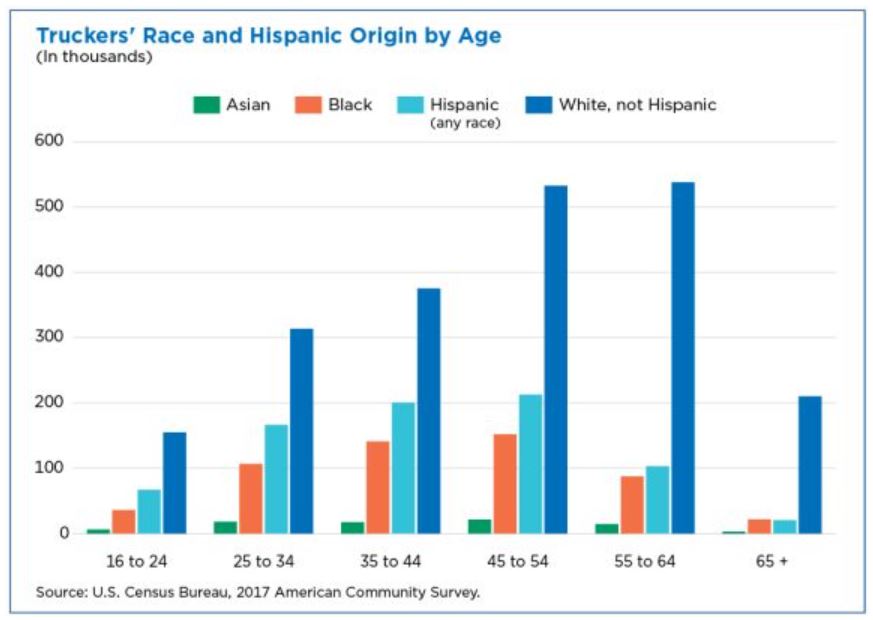
The trucking industry is changing, albeit slowly. While the percentage of female truck drivers is still a fraction of males, research shows that it’s rising steadily each year, with 7.8% of truck drivers being women in 2021.
As more and more women enter the industry, carriers should be asking, “What are we doing to attract these drivers?” This is something that all carriers should be thinking about, but especially carriers that are finding it difficult to recruit and are dealing with poor retention. Here are 4 ways that your carrier can appeal to female truck drivers.
1. Understand the Wants and Needs of Female Truck Drivers

So how can carriers appeal to female truck drivers? First, carriers need to recognize that women drivers will have different concerns than their male counterparts. Since trucking has been a male-dominated profession for so long, many of the policies, rules, and norms have developed accordingly. Making trucking a more appealing profession for women means questioning why things have always been a certain way and demonstrating a willingness to change them when needed.
One of the biggest differences between male and female drivers is their reason for turnover. While men cite home time as the top reason, women cite a few others. Women were most concerned about the quality of equipment, the issue of safety, and poor relationships with coworkers. Let’s see how carriers can address these one at a time.
2. Equipment
 The concern that female truck drivers have over equipment is two-fold. First, consider the ergonomics of a standard semi-truck cab. Generally, they’re built to fit the physical size of a larger man. It can be difficult for some women to reach the controls or get the seats adjusted into a comfortable position while keeping their feet on the pedals.
The concern that female truck drivers have over equipment is two-fold. First, consider the ergonomics of a standard semi-truck cab. Generally, they’re built to fit the physical size of a larger man. It can be difficult for some women to reach the controls or get the seats adjusted into a comfortable position while keeping their feet on the pedals.
How well the truck cab will fit an average female physique will impact whether women drivers will feel comfortable on the job. Luckily, there are manufacturers who make specialized seats for women truck drivers that fleets can invest in.
Secondly, there’s the issue of truck maintenance. Women drivers want equipment that they can count on, so that they aren’t left on the side of the road by themselves waiting for maintenance. While no driver enjoys having that happen, it’s especially important for women drivers to avoid these situations. For them, it’s not only an inconvenience, but a dangerous situation to be in, especially at night.
Apart from investing in newer and better equipment, carriers can also purchase fleet amenities, or make mechanical adjustments to the cabin to better accommodate female drivers. Carriers can also either provide simple mechanical training to female drivers or offer that company mechanics will always walk them through any troubleshooting in the form of real-time roadside assistance.
3. Safety
 The issue of safety is one that female truck drivers of all ages and backgrounds are aware of. Safety from physical harm or the threat of sexual violence is important for all women but affects female truck drivers in unique ways.
The issue of safety is one that female truck drivers of all ages and backgrounds are aware of. Safety from physical harm or the threat of sexual violence is important for all women but affects female truck drivers in unique ways.
A truck driver’s lifestyle is in constant flux since they are always on the road. Female truck drivers may find themselves in unsafe or uncomfortable situations at truck stops, or shipper/receiver locations. Women in Trucking has been working with several truck stops to make them more friendly to women drivers. Carriers can also aid in this effort by pointing out which truck stops are safest, and which should be avoided.
4. Pro-Woman Culture
 Women also tend to leave carriers for reasons related to poor company culture. For all drivers, relationships with dispatchers and management are very important, but this is especially true for female drivers. Women stay longer if they have a good relationship with their dispatcher but will leave quickly if that relationship becomes difficult or strained. Similar difficulties may arise with others such as shippers, receivers, fellow drivers, and even recruiters.
Women also tend to leave carriers for reasons related to poor company culture. For all drivers, relationships with dispatchers and management are very important, but this is especially true for female drivers. Women stay longer if they have a good relationship with their dispatcher but will leave quickly if that relationship becomes difficult or strained. Similar difficulties may arise with others such as shippers, receivers, fellow drivers, and even recruiters.
The problem is that the culture of the workplace isn’t friendly to the wants and needs of female drivers. The good news is that carriers can lead the way in changing the culture, improving workplace relationships, and making women feel more accepted.
But what does having a “pro-woman” culture mean? One example would be offering generous maternity leave. If the carrier you work for has historically only hired male drivers or older female drivers, maternity leave is something that you may not have thought about before. If your carrier is looking to attract younger female drivers, consider upping the amount of maternity leave your carrier offers and making that known in your job descriptions.
Another example of creating a pro-woman culture would be pairing new female drivers with other women drivers during training. This creates a comfort level that is helpful to integrate them into the job.
Similarly, carriers can create a social group for female drivers to share advice, feedback, and advocate for their concerns.
Small steps like these are not just a good marketing move for carriers, but also signal to the industry and other women that you’re serious about hiring more female truck drivers, changing the culture, and making women feel welcome in trucking.










